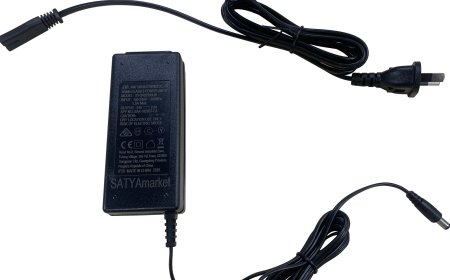Performance vs Security | Optimising Remote Access in the UK
Strike the right balance between access speed and security using smart tools, testing, and expert support for efficient, protected remote work systems.

In recent years, UK businesses have swiftly adopted remote working, cloud tools, and hybrid operations, gaining flexibility and productivity. However, this shift brings fresh challenges especially in remote access. The key issue is balancing performance with security. Smooth access keeps teams efficient, but rising cyber threats demand stronger safeguards. The problem? Enhanced security can slow systems, while fast access may increase risk. Striking the right balance is now essential for every organisation.
So how can UK organisations strike the right balance? This blog explores practical ways to optimise remote access, maintain robust protection, and why regular penetration testing and expert IT support remote access are critical in the modern landscape.
Why Remote Access Is Now a Business Necessity
With more teams working from home or operating across multiple locations, remote access has evolved from a convenience to a critical IT function. Whether its accessing files on a server, managing cloud tools, or providing remote tech support, employees rely on secure access to get things done.
This is especially true for:
- Small to medium enterprises (SMEs)
- Regulated sectors like finance and healthcare
- Businesses using external vendors or freelancers
- IT providers offering outsourced services
But with more access points, comes more risk. Hackers actively target remote access systems, exploiting weak credentials, unpatched software, and misconfigured protocols. Thats why balancing accessibility and defence is now a top IT priority.
The Performance vs Security Dilemma
Imagine this: An employee working from home needs to log into their office desktop. If they use Remote Desktop Protocol (RDP) without additional security layers, its fastbut risky. A cybercriminal could exploit the same open port. Alternatively, using a highly secure VPN with multi-factor authentication slows things downaffecting productivity and user satisfaction.
This is the performance vs security debate in a nutshell. And unfortunately, cutting corners is temptingespecially for smaller teams with limited resources.
Common signs your organisation is leaning too far to one side:
- Users bypass slow secure tools by using personal devices or cloud apps
- IT teams disable features to reduce login complaints
- Remote access tools remain outdated or unpatched
The best approach? Understand the trade-offs and apply security controls that minimise disruption without compromising protection.

Remote Access Tools: A Comparison Table
Here's a quick look at the most common remote access solutions used by UK organisations, along with their performance levels, security grades, and potential risks:
|
Tool |
Performance Rating |
Security Rating |
Common Vulnerabilities |
Ideal Use Case |
|
VPN |
Moderate |
High |
Misconfigured tunnels, credential leaks |
General office access |
|
RDP (Remote Desktop Protocol) |
High |
LowModerate |
Open ports, brute force attacks |
Remote device control |
|
VDI (Virtual Desktop Infrastructure) |
Moderate |
High |
High setup costs, configuration errors |
Controlled enterprise environments |
|
Cloud SaaS(e.g. Google Workspace, Microsoft 365) |
High |
Moderate |
Poor access control, insider risk |
Document access & collaboration |
|
ZTNA (Zero Trust Network Access) |
Moderate |
Very High |
Complex policy errors |
Regulated industries or sensitive data |
Each tool has pros and cons. But in every case,penetration testing UKspecialists can help test configurations, identify weaknesses, and offer tailored recommendations for your industry.
How to Strengthen Security Without Sacrificing Speed
So, how do you strike a balance? The key is intelligent layeringcombining strong protection with smart technology that doesnt frustrate users.
1. Layered Access Controls
One of the most effective techniques is role-based access control (RBAC). This ensures users only get access to the data and systems they genuinely need.
Other key practices include:
- Multi-Factor Authentication (MFA) to reduce the impact of stolen passwords
- Device Trust Verification, allowing access only from secure, registered devices
- Time-limited access tokens for temporary contractors or one-off jobs
When layered correctly, these controls create multiple barriers without dragging down speed.
2. Penetration Testing Services
Penetration testing, also known as ethical hacking, simulates real-world attacks to expose vulnerabilities in your remote access setup.
Benefits include:
- Spotting misconfigured firewalls or open ports
- Testing MFA bypass techniques
- Verifying endpoint protections
Whether you manage access in-house or use outsourced tools, regular penetration testing services are essential to keeping your remote environment secure.
3. IT Support for Remote Access
Not every business has a dedicated IT department. Thats where managedIT support remote accessservices come in.
Benefits of outsourcing IT support:
- 24/7 monitoring and troubleshooting
- Expert setup of VPNs, firewalls, and remote access tools
- Proactive patching and update management
- Advice on compliance with UK regulations like GDPR and ISO 27001
With expert support, small businesses can enjoy enterprise-level security without heavy overhead.

Future Trends in Remote Access Security
Technology is moving fast, and remote access is evolving along with it. Here are some upcoming trends UK businesses should prepare for:
- Zero Trust Architectures (ZTNA):Instead of assuming trust within a network, ZTNA verifies every request, regardless of location. Its more securebut requires thoughtful planning.
- AI-Powered Threat Detection:Machine learning helps detect suspicious behaviour, such as unusual login times or locations.
- Endpoint Hardening:As remote work continues, securing employee devices becomes more critical than ever.
- UK Government Frameworks:The UKs National Cyber Security Centre (NCSC) is providing updated guidance for remote and hybrid environments.
These trends show that remote access security is not a one-time projectits a continuous journey.
Best Practices for UK Businesses
Whether you're a growing SME or an established organisation, these practices help build secure and high-performing remote access systems:
- Use strong encryption protocols like SSL/TLS for all remote sessions
- Deploy MFA across all platforms, not just critical apps
- Avoid shared loginstheyre difficult to audit and easy to exploit
- Run penetration testing services at least annually or after major system changes
- Choose a reliable IT support remote access partner to manage and monitor tools and endpoints
- Educate your employeesmost breaches still begin with human error
Conclusion
Remote access has become essential to business operations in the UK. But with more connectivity comes greater responsibility. Striking the right balance between performance and security requires a careful mix of technology, people, and proactive planning.
By investing in tools like Zero Trust, securing devices with MFA, and regularly engaging in penetration testing UK, businesses can prevent security incidents before they happen. And with the help of expert IT support remote access teams, they can ensure fast, safe, and seamless connectivity for all employees.
Renaissance Computer Services Limited supports organisations in building secure, high-performing IT infrastructures that are ready for the challenges of todays remote-first world.































